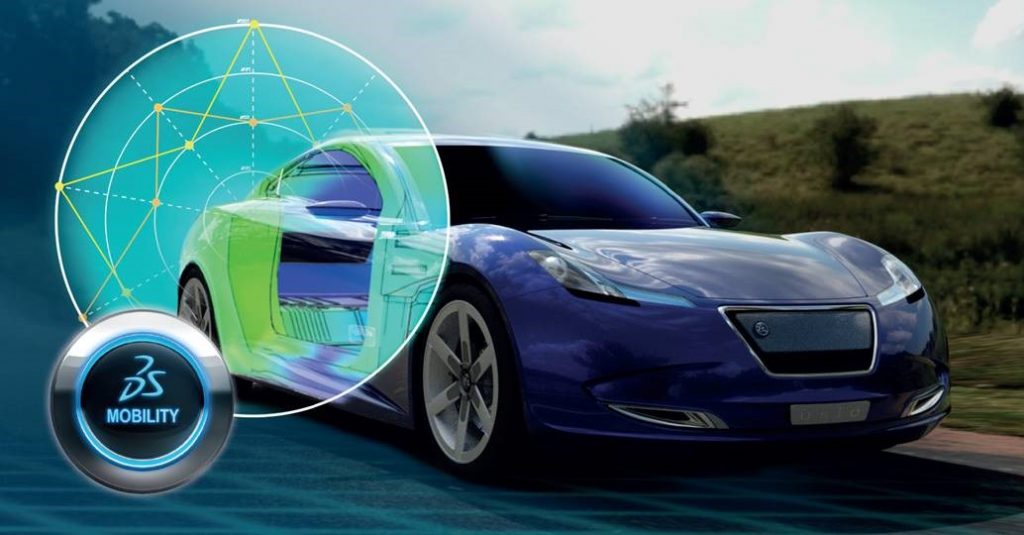Advanced Driver Assistance Systems (ADAS) are a major step toward fully autonomous driving. ADAS use automated sensors and cameras to detect obstacles in the range of the vehicle, as well as errors made by the driver, and then correct for those errors or avoid the obstacles. These systems are designed to keep roadways safer by reducing mistakes made by drivers.
ADAS is not a brand new technology; it has in fact been in use for years in the form of lane departure warnings, automated headlights, blind spot warnings, and even anti-lock brakes. More than 80 percent of vehicle innovation now comes from embedded software and electronics. As the automotive industry progresses toward a more autonomous future, vehicles will become even more complex and connected.
Right now, vehicles use a significant amount of 4G technology in the form of connected mobility services such as dynamic traffic information and mobility as a service. How much more advanced will autonomous vehicle technology be when 5G is introduced?
That question is already beginning to be answered. A partnership of leading companies Audi, TIM, Pirelli, Ericsson Research, Qualcomm, Italdesign, Tobii and KTH Royal Institute of Technology recently demonstrated the potential effects of 5G technology on ADAS, using TIM’s commercial 5G network. The world-first use cases were demonstrated in November 2019 at the 5G Automotive Association (5GAA) event in Torino, Italy.

The connected technology demonstrations included:
- 5G hydroplaning alert, in which connected cyber-tires transmit data on a segment of road where hydroplaning is occurring to the 5G network. The information is collected by the edge cloud and then transmitted to vehicles following the one that reported it.
- Hidden pedestrian alert, in which a distracted pedestrian is warned through his or her smartphone that a vehicle is approaching. The driver of the vehicle is also warned about a nearby pedestrian, and eye-tracking technology can also assess, once the vehicle gets closer, if the driver has seen the pedestrian or not.
- Augmented road sign information, which uses eye-tracking technology connected to a remote cloud to provide real-time information to the driver depending on his or her gaze; for example, an unknown traffic sign can be explained to the driver.
Innovations such as these are not simple to develop, obviously. Increasing system complexity competes with a need to reduce development time and cost. The increasing density of electric and electronic systems greatly raises the potential for electromagnetic interference, and the very nature of autonomous systems requires perfect performance under extreme conditions.
Dassault Systèmes’ tools allow automotive manufacturers to develop and virtually validate antenna concepts and innovations, ensure correct inter-operation with electronics, and improve overall driving experience. Electronic and mechanical engineers can work together in a digitally connected collaborative platform to quickly and easily generate simulation-ready antenna concepts and integrate them into the complete vehicle design.

Incorporating 5G into automated vehicles will require careful and comprehensive simulation technology as drivers begin to rely more and more on the sensors and antennas that alert them to and compensate for obstacles. Engineers must be able to assess the best placement for sensors and other electronics to protect them from weather and road conditions, and to ensure that electronics fulfill certification standards.
As the market for automated vehicles becomes more competitive, manufacturers will depend more and more on simulation to enable them to develop new, innovative features and bring them to market with reduced development time. 5G is likely to be the next major development in the evolution of vehicle automation, and seeing some of its potential applications is exciting. To bring them into reality, however, simulation will need to play a large role from the beginning to the end of the development process.
Discover how simulation can help to ensure communication and detection for safe, reliable ADAS and Autonomous Driving Systems and watch the on-demand webinar “ADAS Sensor Design and Placement” here.
SIMULIA offers an advanced simulation product portfolio, including Abaqus, Isight, fe-safe, Tosca, Simpoe-Mold, SIMPACK, CST Studio Suite, XFlow, PowerFLOW and more. The SIMULIA Community is the place to find the latest resources for SIMULIA software and to collaborate with other users. The key that unlocks the door of innovative thinking and knowledge building, the SIMULIA Community provides you with the tools you need to expand your knowledge, whenever and wherever.
